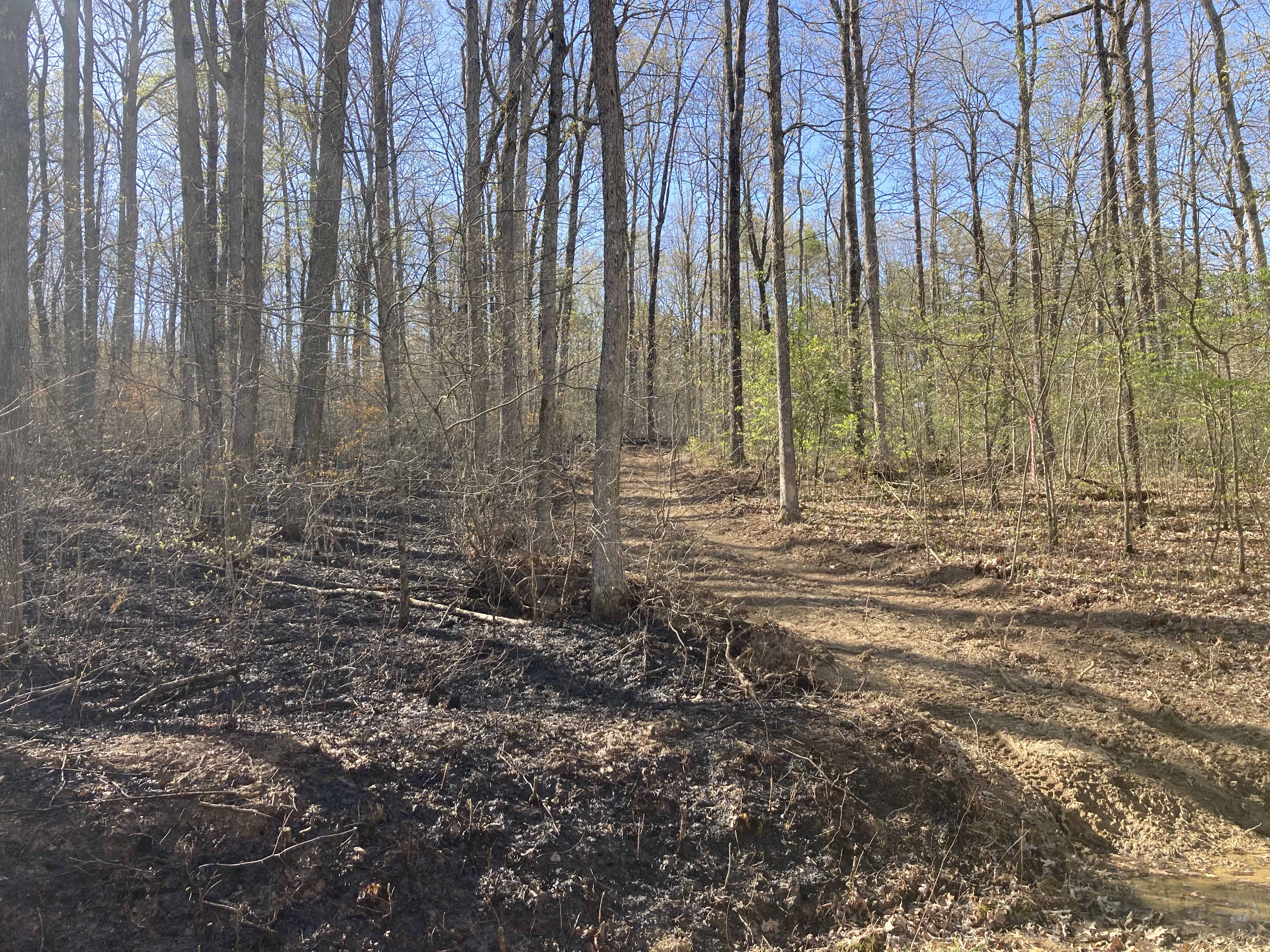Prescribed Burns in the Ozarks
Contact
University of Arkansas System Division of Agriculture
Cooperative Extension Service
2301 S. University Ave.
Little Rock, AR 72204

Prescribed Burns in the Ozarks
Spring is the smokey season here in the western mountains of Arkansas. Even fires set in the 100-mile-distant Ouachita National Forest mingle with smoke created locally as foresters in the Ozark National Forest torch the undergrowth in our national forest lands. Fortunately, the misguided policy of stopping all fire outbreaks in our national forests has given way to a more sensible approach of using fire as one of the tools to help manage the vast tracks of woodlands overseen by state and national foresters.
I’ve been spending a fair amount of time in the higher reaches of the Ozark National Forest’s Boston Mountains during the past year and have noticed several prescribed burns conducted over the past few years. Just last week the National Forestry Service conducted what they called the “Smith Ridge RX Burn” on the road leading to my hangout in the woods, so now I will be able to watch firsthand how this fire changes this little piece of the Ozarks. This region is the typical second growth oak forest of the Ozark Highlands with elevations mostly between 2,200 and 2,400 feet.
The “Southern Region Prescribed Burn Accomplishment Tracker” map the NFS put together shows the burn was conducted on April 12 by the Buffalo Ranger District and consisted of 1,466 acres. This burn is listed as only partially complete with about twice that much acreage planned. But looking at the map it is apparent that the forest is large, the staff is small and less than 10 percent of the forest is scheduled for these prescription burns. Though about 60 burns were listed as “planned” for this season in the Ozarks, the number listed as completed is far less.
That the word fire was a profanity in the forester’s lexicon for so long was due to the Great Fire of 1910 that burned 3 million acres in northern Idaho and western Montana. By way of comparison, the enormous fires in California in 2021 burned 1.5 million acres combined. The Forest Service had been founded just five years earlier, and this enormous fire helped shape the agency’s future role: Prevent wildfires, and save all that valuable timber so good capitalists could make money from it. Then a burned baby bear was rescued from a fire in New Mexico about the time television sets made their way into American homes, and the iconic Smokey the Bear campaign firmly established the notion that all fire was bad.
In Arkansas, our forests had been clearcut by the time our national forests were assembled in the 1920s, but the policy of fire prevention was a Forest Service policy, so great effort was expended to control forest fires here at home. But during that period jobs were few and far between, wages low and the locals needed work. Because the Forestry Service hired locals to fight fires, it soon became apparent that — at least in the Ozarks — that policy would not work. Most of the fires being fought were started by locals who were later hired to help put them out.
The National Park Service changed its view on fires in the 1960s with the Forest Service officially changing its policy towards fire in 1974, but a distrust of letting fires burn lingered in these two agencies. Coupled with a pervasive distrust of government agencies and setbacks such as the 1988 Yellowstone fire and the 2022 out-of-control prescribed burn in New Mexico – the largest ever recorded in the state – make some hope the foresters know what they are doing when they first sniff smoke on the wind.
The stated goals of the Smith Ridge burn are to reduce the hazardous fuel load in the understory and for wildlife habitat restoration. The understory, especially near roadways where more light is present, is a tangled mass of deciduous and evergreen saplings, blackberry vines, greenbriers and other understory components. The roadside view seems to indicate the accumulated leaf litter and downed branches are gone and a good kill on the smallest saplings, thus accomplishing the goal of reduced fuel load.
The fire was late in the season and just a few days before the opening of turkey hunting season. Turkeys begin nesting in late March, so this fire could have disrupted some ground-nesting birds, turkeys included. Biologists claim, however, that fire is a positive for turkey populations because the new growth spurred by the fire encourages more insects. In any event, the turkey population usually expands after a fire.
So, it will be interesting to follow the aftermath of this little fire and watch as nature regroups after encountering one of the essential forces that shape our natural world.
